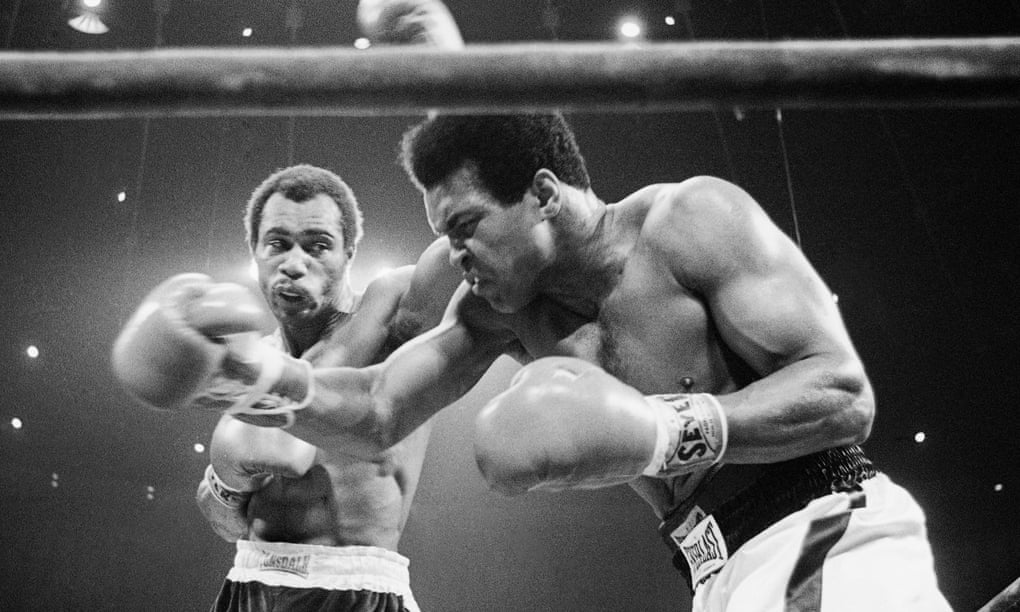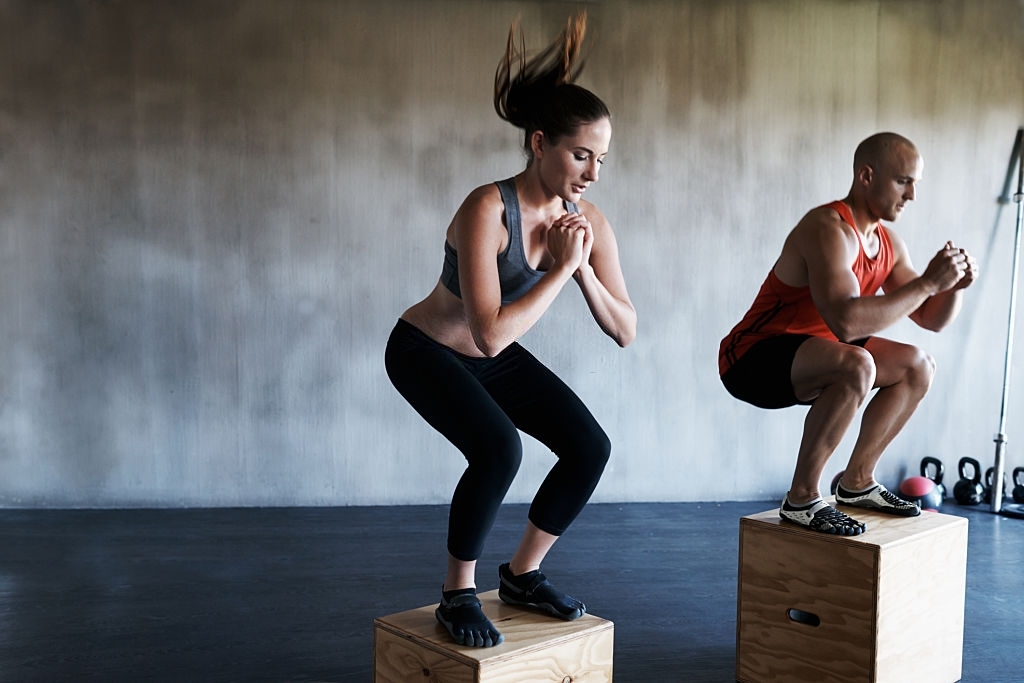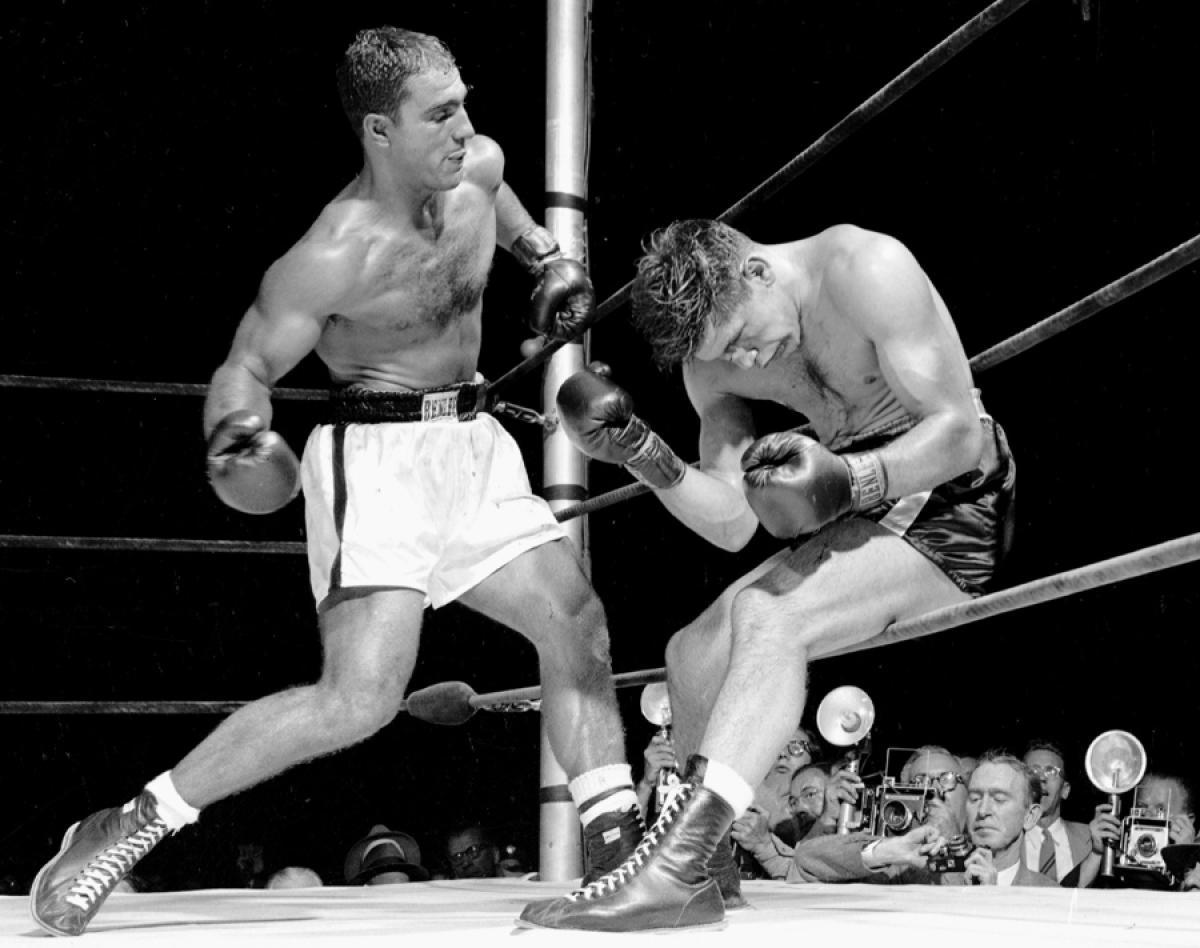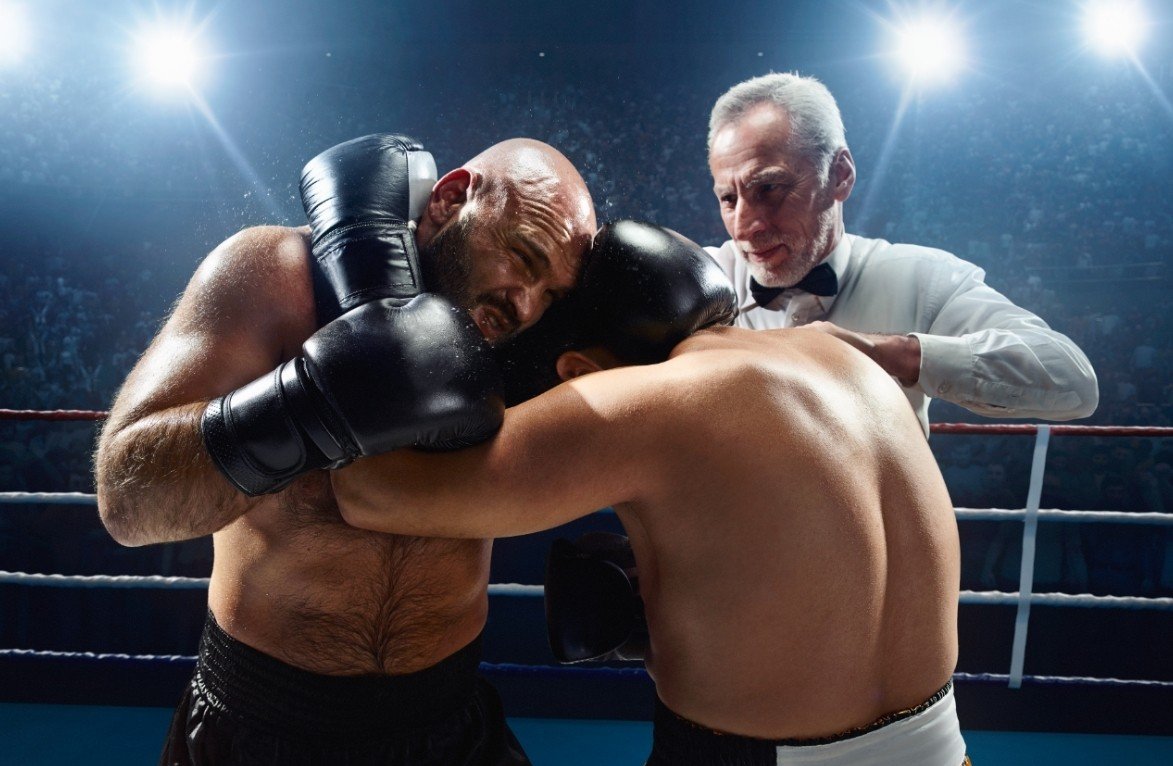There’s no way to put this lightly, so I’m just going to come out and say it…
Defense in boxing is so hard to learn.
Boxers looking to improve their boxing defense tactics face an uphill task. That’s because a lot of it comes from the instinctive reading of the opponent’s body shape, shoulder and head movements, and reacting to footwork, etc.
The problem with learning this is that it must be done in sparring. Get it wrong and you get hit. Getting hit hurts. Getting hit repeatedly is not good for your health, especially your brain (headgear or not).
Repeated punches to the head can lead to Chronic Traumatic Encephalopathy (CTE), a brain condition caused by concussions or repeated blows to the head.
CTE — also known as “punch-drunk syndrome” — causes slurred speech, memory loss, shakes, violent mood swings, depression, and other symptoms. About 90% of boxers suffer concussions in their career and many also deal with CTE.
Even more shocking is that concussions are now known to be much more serious injuries than once thought. According to a recent scientific study, a single concussion may triple the long-term risks of suicide.
This harsh truth means that you need to see most of the punches coming — and defend them. I say most because even the best boxers in the business don’t see all the punches coming. It’s impossible.
That said, learning the best boxing defense techniques is just half the journey. You need to master a few fundamentals of movement in regards to footwork.
Let me explain.
If you put a lot of focus on slipping and rolling punches without improving your footwork and coordination technique, you’re as good as a stationary target — and a stationary target is easier to hit.
Few boxers can dodge a properly formed punch from a stationary position anyway. Meaning, you need to master solid footwork fundamentals to help you build speed, power, and fluidity — before you can even master the defenses against each punch. This holds throughout any punch you may attempt.
To paint a clear picture:
Floyd Mayweather and James Toney often give opponents the illusion of a stationary target but their defense is subtle movement.
Mayweather dangles himself in range but he’s already set his feet in motion. He pulls his chin back after a specific time whether you punch or not. The lethal Guillermo Rigondeaux also lives off this tactic in the ring.
In other words: footwork is everything.
Why is Footwork Important in Boxing?
Boxing is more than just punching, ducking, weaving, and slipping.
You need to master movement that will send your opponent crashing down against the ropes. Or worse, leave them with a bad hematoma that prevents them from coming out for the next round.
Here’s everything you need to know about footwork.
It’s the ultimate defense
Whenever boxing defense techniques are mentioned, blocks, parry, and head movement often come to mind — and for good reasons, because these are the staples to protecting yourself in the ring.
However, these are just the icing. Well-developed footwork is the cake that helps you stay in a position where your opponent will not strike from an angle that requires you to block their punches.
Once you perfect your footwork, it becomes your primary defense — it’s far much better to use your feet to escape an unconventional angle than weave through your opponent’s punches and get hit.
It allows you to find and exploit angles
Exceptional footwork creates angles. Great angles then create more opportunities that win you rounds and fight finishing combos.
You don’t expect to land a knockout punch while standing directly in front of your opponent. That won’t happen unless your opponent is stationary (which is rare) or you possess a great speed advantage.
This is where angles come in.
The subtle footwork off to the side allows you to blast that shovel hook to the body, the left foot pivots while you unload a check hook on an aggressive opponent attempting to back you up against the ropes.
It helps you generate power
To place as much power behind your punches as possible, your stance needs to remain balanced while striking both forward and backward.
If you’re leaning forward or your weight is distributed incorrectly, odds are you will miss and potentially fall forward.
Mastering boxing footwork drills will help you sit down on your punches (or sink your weight into the canvas of the boxing ring) and be in a position to counterpunch with power.
If your opponent throws a wild punch and misses — exposing their chin for a moment — and you have your legs crossed over or standing too tall, you will miss an opportunity to make them pay.
It wears off your opponent
Dread, doubt, and anger can cloud your thoughts whenever you try and bring an opponent against the corner of the ropes only for them to disappear.
And when your sparring partner repeatedly tags you, your mind experiences fatigue. You will wonder why you can’t catch them. Then your legs will start to give way mid-round as you lack the footwork skills necessary for endurance.
Sparring an individual that pays no attention to developing their footwork is like boxing in 3D while your opponent is only 2D. Footwork adds a whole other dimension to the game of boxing — and that’s a fact.
It optimizes your energy reserves
The best way to fatigue an opponent physically and mentally, as the round goes on, is to master and employ the use of evasive footwork tactics.
With exceptional footwork techniques, you not only optimize your energy reserves but also help increase your volume of punches per round.
When sparring a particularly aggressive opponent, use slick footwork instead of moving backward in a straight line to cut angles. It’s easy to frustrate and even anger your opponents this way.
Boxing Footwork Drills to Improve Your Movement
Whether you’ve spent days or years in the ring, these footwork drills can take your boxing to the next level.
1) Jump Rope
Training with a jump rope keeps you quick and light on your feet.
For an added challenge, speed up your tempo with a jump rope — or practice any of these jump rope drills to improve your movement:
- Criss Cross arms. Get yourself into a comfortable rhythm jumping naturally. Then bring one hand over the other as the rope comes down in front of you. When mid-jump, alternate crossing one arm over the other. And as you bring the rope behind you, uncross your arms again.
- Backward jump rope. Jump as you normally would but reverse the direction of your arm rotation — such that the rope is traveling in the opposite direction.
- High knees jump. For every jump, try and bring both of your legs as far up towards your chest. This drill challenges you to an intense jump rope workout.
2) Box Jumps
Your stance could be good but if your legs lack power and speed, your opponent will take advantage of this in the ring. Box jumps improve extreme power and speed in your legs.
To perform box jumps (also known as plyometric exercises) use a soft box for safety — or one that’ll be forgiving in case you fail to clear the box on your later repetitions as your legs begin to fatigue.
3) Agility Ladder
Just like hopscotch, agility ladder exercises are simple and fun — and yet super helpful in improving your footwork and dexterity in the ring.
If you don’t have an agility ladder, don’t worry. Using tape and chalk, mark out a ladder pattern or draw a bunch of boxes on the floor to replicate the look of an agility ladder. Then use them for these exercises.
Agility ladder footwork drills to try out include:
- Ins and outs
- Forward and back
- Single foot hops
- Cross-overs
4) Shadowboxing
Do you want to perfect your boxing footwork techniques? Shadowboxing is a common boxing training exercise that also improves form and other critical boxing defense tactics.
To nail down the perfect movement in the ring, observe the footwork of other professional boxing trainers — what, when, and how they do it for — and then practice daily. You don’t need footwork equipment for shadowboxing drills.
5) Dance
One of the most essential and yet often overlooked elements of boxing is mastering graceful motion. The legendary Muhammad Ali spoke about it as well — floating like a butterfly, remember?
Mastering graceful motion makes you agile and flexible in the ring. And creates smooth footwork patterns. You can train in various forms of dance to help improve your rhythm, agility, and footwork techniques.
That said, footwork begins with stance and gradually improves with training. So always include footwork drills in your boxing workout routines.
7 Boxing Defense Tactics to Outsmart Your Opponents
You’ve already mastered good footwork technique, now you want to develop the best boxing defensive tactics to outsmart your opponents.
Learning the proper defensive moves is important. That’s because no matter how hard a hitter you are, or how strong you are, you will one day come up against someone who can handle your punches — and who may hurt you.
That’s when you must apply your boxing defense techniques. Even the unbeaten heavyweight champ and legend Rocky Marciano was knocked down twice, though he got up to beat both men — Walcott and Moore.
When a punch is thrown at you, you have a choice of several different ways of avoiding it. You can block the punch with your hand, arm, elbow, or shoulder.
Or you can pick it off with your glove (also known as parrying). Another choice is to go with the punch, moving your head in the direction of the punch.
1. Ducking
A duck is performed by quickly bending the knees and leaning slightly forward.
The big advantage to ducking or slipping a punch (instead of blocking or parrying it) is that you still have both hands free, ready to counterpunch.
The proper way to duck a punch is to move to the inside line. In other words, to avoid the right punch, move your head to the right. And to slip a left, move your head to the left. This leaves you in the perfect position to counterpunch.
If you move to the outside — that is, to the left when your opponent throws a right or to the right when your opponent throws a left — your opponent’s arm will be blocking you, even hitting you as you move into their punch.
Are you struggling to defend against punches? Learn some of the best boxing defense and counter punching techniques. You will soon master various ways to defend the jab, the right hand, hooks, uppercuts, and body shots.
2. Bobbing and weaving
Bobbing and weaving is an effective defense technique in slipping punches because it allows you to come up swinging.
Learning to punch from a bob and weave technique takes practice, but the defensive and offensive advantages it gives you make it well worth the effort.
When bobbing and weaving, alter your moves. If you keep making the same moves over and over, it won’t take your opponent long to figure you out. Also, always watch your opponent’s chest when bobbing and weaving.
By doing so you can tell what punches they’re going to throw. You can also tell approximately where their head is so that you can go on the offensive quickly and land your own punches.
3. Parrying
A parry is an inside deflection of an incoming punch with a short, quick tap using only your wrist and hand. This may cause your opponent to become vulnerable — in turn giving you an opportunity.
Blocking or picking off a jab, or parrying can be done in either one of two ways, depending on the type of jab being thrown at you.
If the jab comes straight from your opponent’s shoulder, extend your left arm sideways from the proper stance position, just enough to knock or brush the blow to the outside.
If your opponent is jabbing from a lower guard position, you can either catch the jab in the open palm of your right glove or press downward with your right, knocking the blow away from you.
4. Blocks
The goal of this boxing defense tactic is to put something in the way of the punch — like a glove, forearm, or elbow to absorb the brunt of the blow.
For example, when you place your glove against your head, you will feel the pressure of the blow but not the pain.
Try to keep your elbow pointing down and your eyes on your opponent. Make sure there’s no separation between your glove and face. Otherwise, you’ll end up hitting yourself.
Adding a slight turn and weight shift with contact puts you in a position to throw a counter-punch of the same variety. If your opponent throws a right hand, you block and counter with your own right hand.
5. Sidestep
Stepping to the side of the blow is also an important defensive tactic to learn.
Slips are more effective than blocks if you’re fighting against a bigger opponent, but absorbing lots of them from a big man saps your energy.
Evasive moves such as sidestep drills allow you to really exploit aggressive boxers who overthink their punches. And it’s frustrating to throw punches that miss their mark.
When using this boxing defense tactic, you must match the intensity of the punch by “popping” your defensive moves. That means the speed of your head must equal the speed of your hand.
6. Peek-a-Boo
This boxing defense tactic allows you to keep both hands at a level while holding them a few inches in front of and to the side of your head — as if playing peek-a-boo.
Keeping your hands in this position, helps you use your gloves to block punches thrown at your head. And to use your elbows to block body punches.
Mike Tyson used to fold his arms with his elbows pointing out across his body. He hid behind his arms most of the time and maintained a peek-a-boo hand position while in the ring.
As a beginner boxer, you will soon discover the best defensive style for you after a while. So don’t worry if you find this defense technique too hard.
7. The Clinch
What if your defensive efforts have been unsuccessful in the ring? What do you do in that case? Well, desperate situations call for desperate solutions.
Try to tie your opponent up in a clinch. Clinching means holding your opponent’s arms so that they can’t strike a blow.
By moving in on your opponent and pinning both of his arms to your body with your arms entwining them on the outside, you can gain additional time after missing a blow.
Gaining time can be especially crucial when you’re hurt or tired. Boxers shouldn’t hold in the ring, though.
However, you must know about this defensive tactic if you want to get a breather — as part of your defensive strategy.
The Bottom Line?
Defense in boxing is a matter of instinctive self-preservation.
That said, it’s up to you to sharpen your fighting instincts. And know all of the fundamentals of boxing and what it takes to succeed at defending punches.
You don’t have to go at it alone, though. If you’re struggling to achieve high-level defense, this beginner’s guide will help you get the most out of boxing with virtually no equipment or pre-requisite skills.
Boxing is half defense and half offense. But when you’re pounding the heavy bag all by yourself, it’s not so easy to see that. We’ll make sure you master the basics of boxing (including defense) in no time.








Hello sir,
1st I need to thank you very much for sharing this valuable information. a few days ago I was watching a boxing match at Olympics. frankly speaking in my country boxing is not a popular game. that’s why I don’t know about boxing very well. but after watching that match I was very curious about boxing. after that’s I am trying to know about boxing.. and your post helps me out. and now I am trying to make a website to help some people who want to know about boxing.
thanks